Palm trees are vital habitat for Austin’s yellow bat population and can host up to four other local bat species.
To our knowledge, yellow bats roost nowhere else but the brown skirt of palm trees, which hangs below the green crown of live fronds.
We’re talking about palms where the bottom of the skirt is at least 12 feet above the ground, allowing bats to drop into flight above the reach of leaping predators.
Winter Storm Uri (The Feb 2021 Freeze Event) had a devastating effect on Austin’s palm trees, with over 90% being killed. This makes the skirts on the surviving palms critical to the survival of the two species of yellow bats. We can minimize the harm to our local bats with careful analysis and best management practices, if palm tree work cannot be avoided and just has to be done.
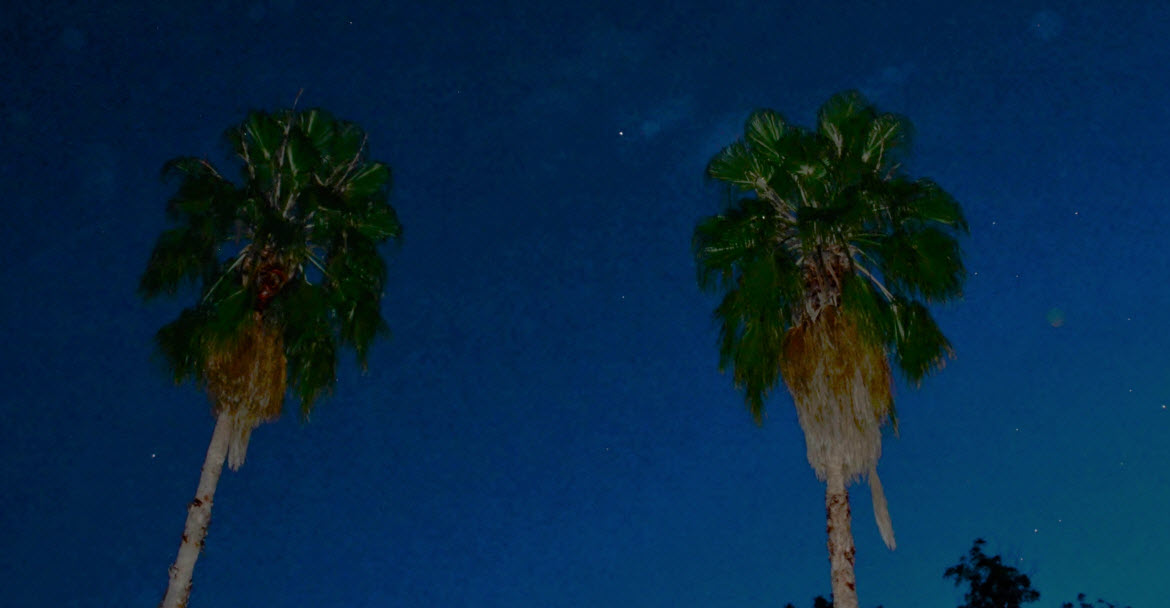
Two species of yellow bats roost in the skirts of Austin’s palm trees – northern yellow bats and southern yellow bats.
Watching them fly out at night from your palm tree is a natural wonder. Set up the lawn chairs, crank up the margarita machine and invite the neighbors. Add a bat detector and you have a back-stage pass to the best of Austin’s wild nightlife!
If you don’t have a palm tree, our Instagram account @austinbatrefuge has tons of great videos where you can get to know them. Give us a follow!
If you own a palm and want some cover as to why you aren’t pruning the skirt, then purchase one of our yard signs and proudly proclaim you support for Austin’s yellow bats!
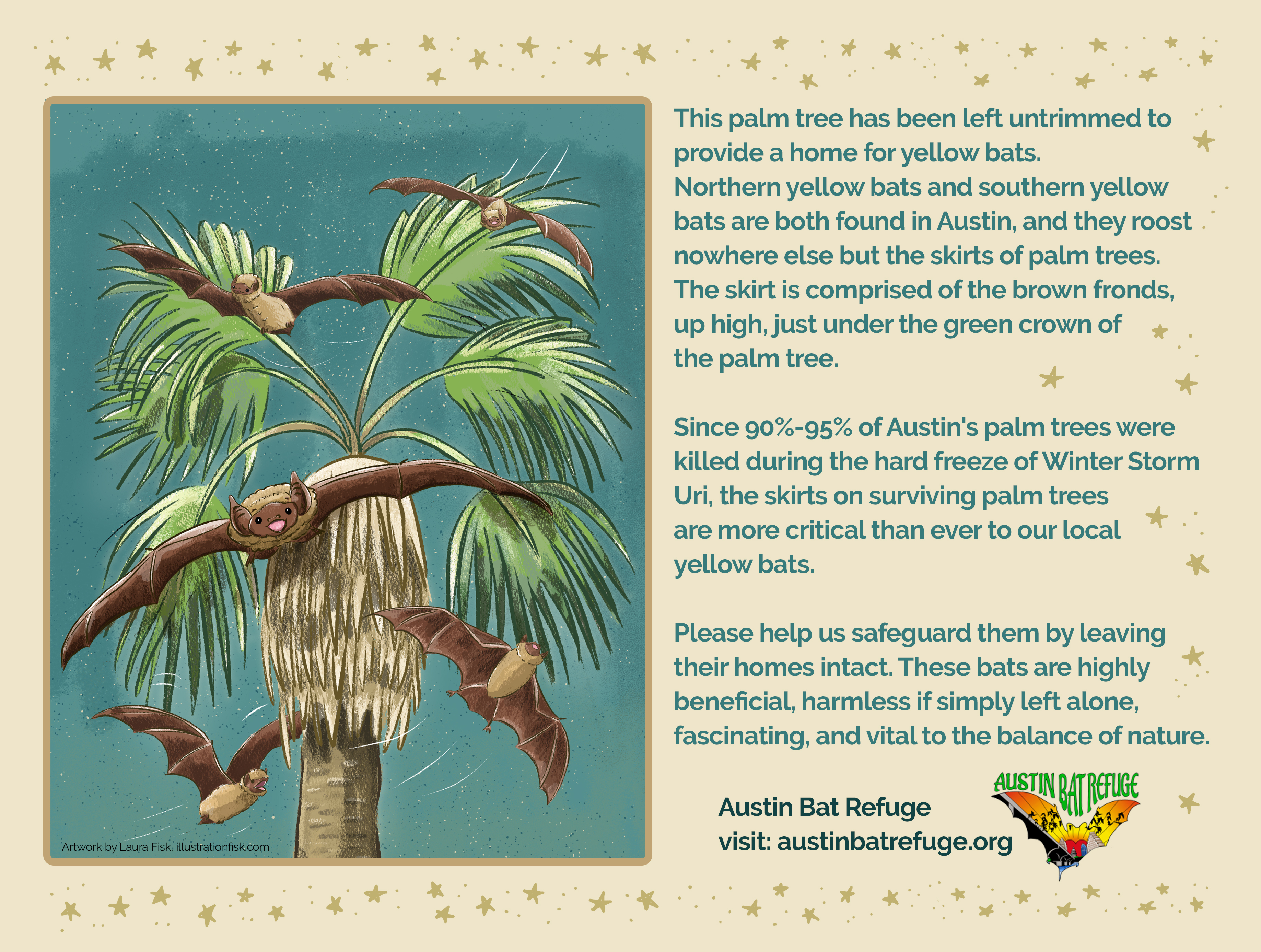
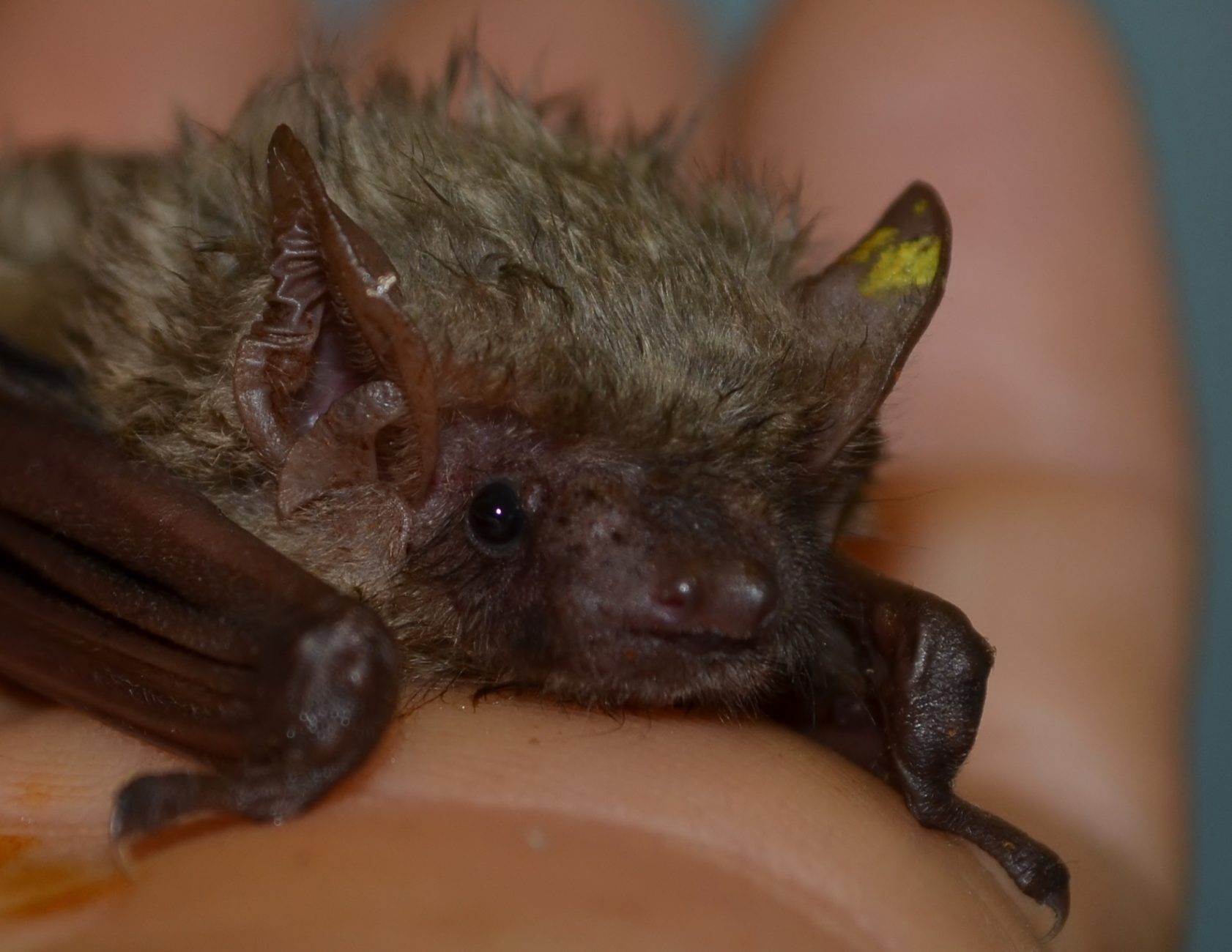
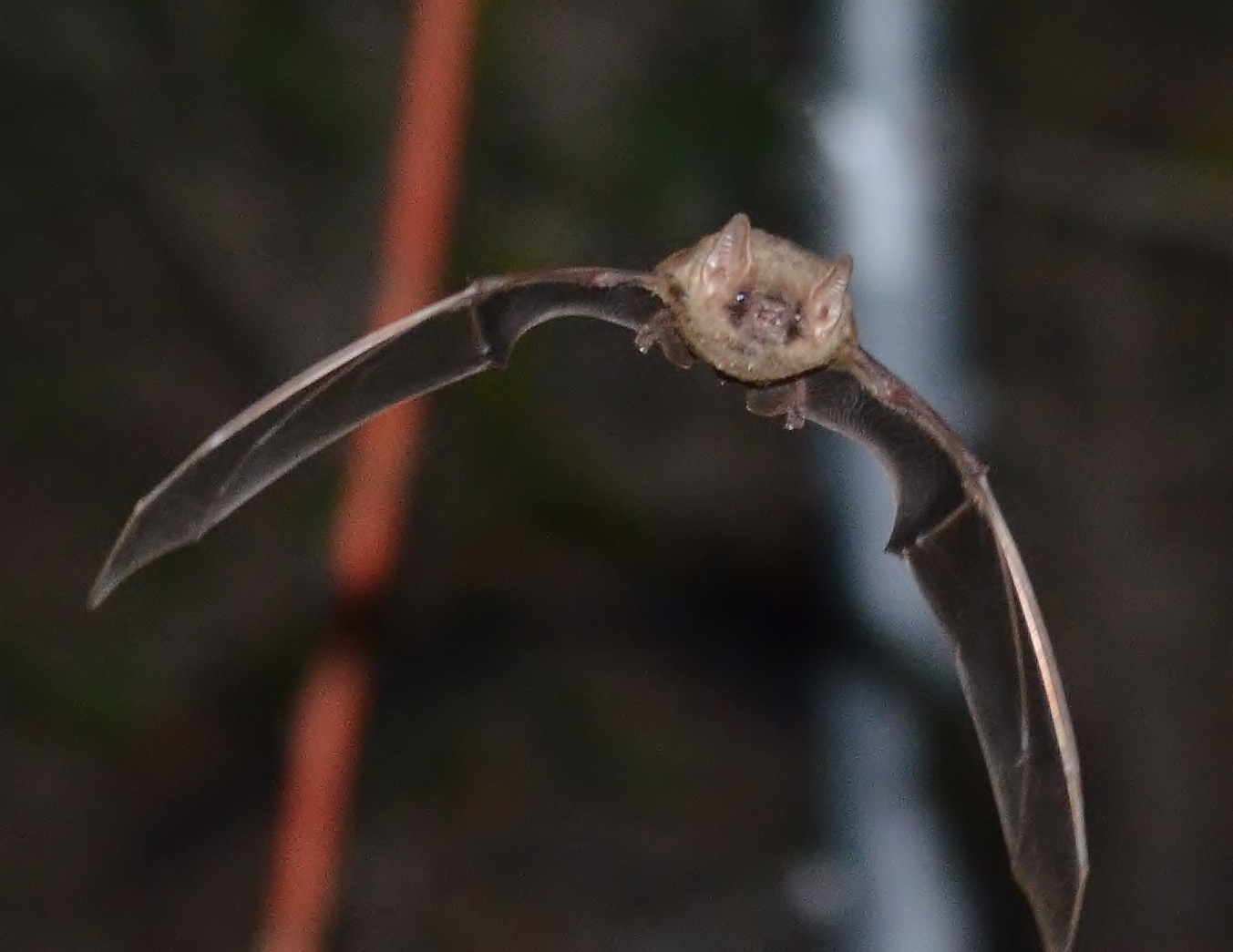
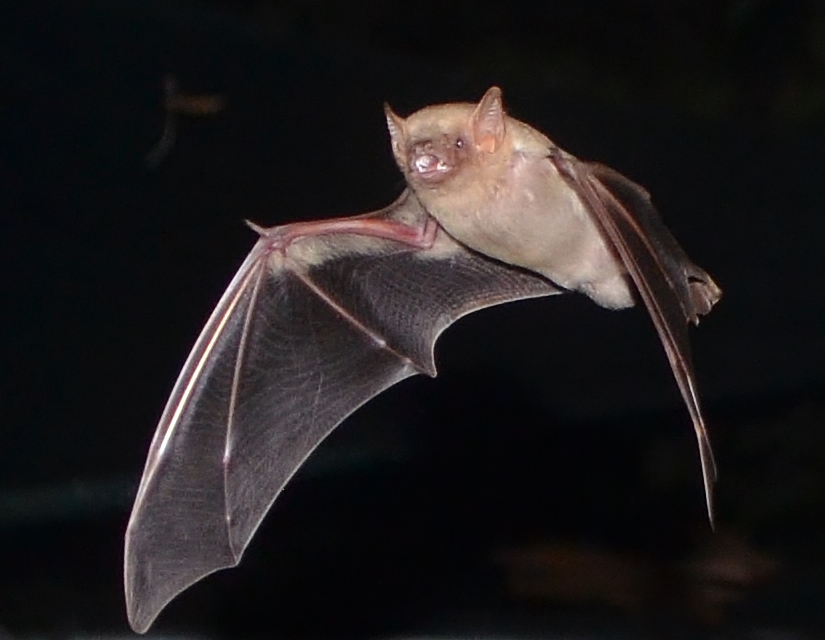
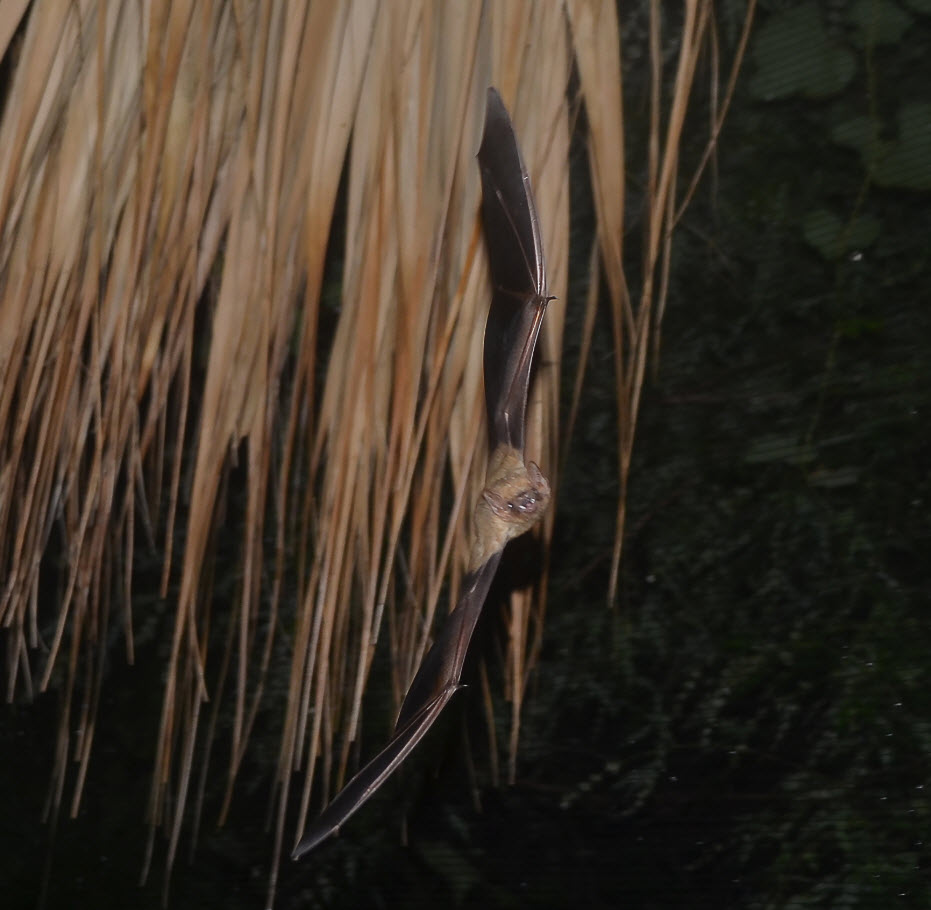
This skirt is valuable habitat for a variety of other wildlife too, including over 20 species of birds.
They all love this habitat because they can roost out of the sight of predators, which means they won’t be easily seen by humans either.
Please be aware that yellow bats give birth in these skirts and will be nursing non-flying pups from mid-May through August. Tree work that involves the skirt of the palm tree will injure or kill bats, and orphan the non-flying pups if their mother is scared away by her roost being demolished. Bats feel safe in palm fronds and generally will not flush at signs of danger. “Birds Bolt – Bats Don’t”. They are deep sleepers (even on warm summer days) and, on top of that, will be in torpor during the winter, even during warm spells, due to short days and low light levels.
We have seen this many times in the last decade. People are unaware there are bats in their yard until a palm tree is removed “lumberjack style” and they find bats with compound fractures of the wing amongst the pieces of fallen palm tree. Or a palm skirt is pruned during maternity season and non-flying yellow bat orphans are found helpless on the ground. Please don’t let this happen to you or your bats. It’s a tragedy for them and can be traumatic for your family.
Palm trees don’t need to be “manicured” and are best left alone for their longevity and health.
Native palms such as our Sabal mexicana and introduced palms such as Sabal palmetto stand up very well to wind events and giving them a “Hurricane Cut” (removing the skirt) does not make them any more resistant to storms. That cut can, however, allow for an easier introduction of disease. Neither one of those palms has thorns on the stem of the fronds. Washingtonia filifera, a stately, thick-trunked palm, has thorns on the stem.
The long skirt of old fronds also acts to insulate the trunk of a palm against freeze events such as that caused by the Feb 2021 Polar Vortex. All the above-mentioned species of palms have a better chance of withstanding more extreme winters, if planted on the south side of a building.
For a great primer on local Austin palm trees, see Identification of Palm Trees In the Austin, Texas Area: A Casual Guid for Distinguishing our Native Sabal mexicana from the Aliens by late, great, and witty, Landon Lockett.
Many palms were damaged during Winter Storm Uri. We urge property managers and homeowners to consider wildlife when working to tidy up their property. Please give palms a chance to show new growth before assuming they are dead. An inspection with binoculars, from back aways or from an elevated location, on a sunny day is the best way to inspect for new green growth. Many palms we thought to be dead are now showing signs of life. Once a company with a bucket lift is on site, it is pretty much a given that pruning will be done in order for them to recoup their investment in time and equipment.
If clean up is absolutely insisted upon, please don’t give palms a “buzz cut” or “hurricane cut”.

Palms can be selectively pruned to remove the freeze damage while maintaining the skirt that has been forming over years and that provides critical habitat for as many as six of our local bat species. The new freeze damage has an unruly appearance, like windblown or frizzy hair and we contend that those fronds can be removed (if absolutely necessary) while leaving the skirt (and its valuable habitat) intact. PLEASE LEAVE THE SKIRT!
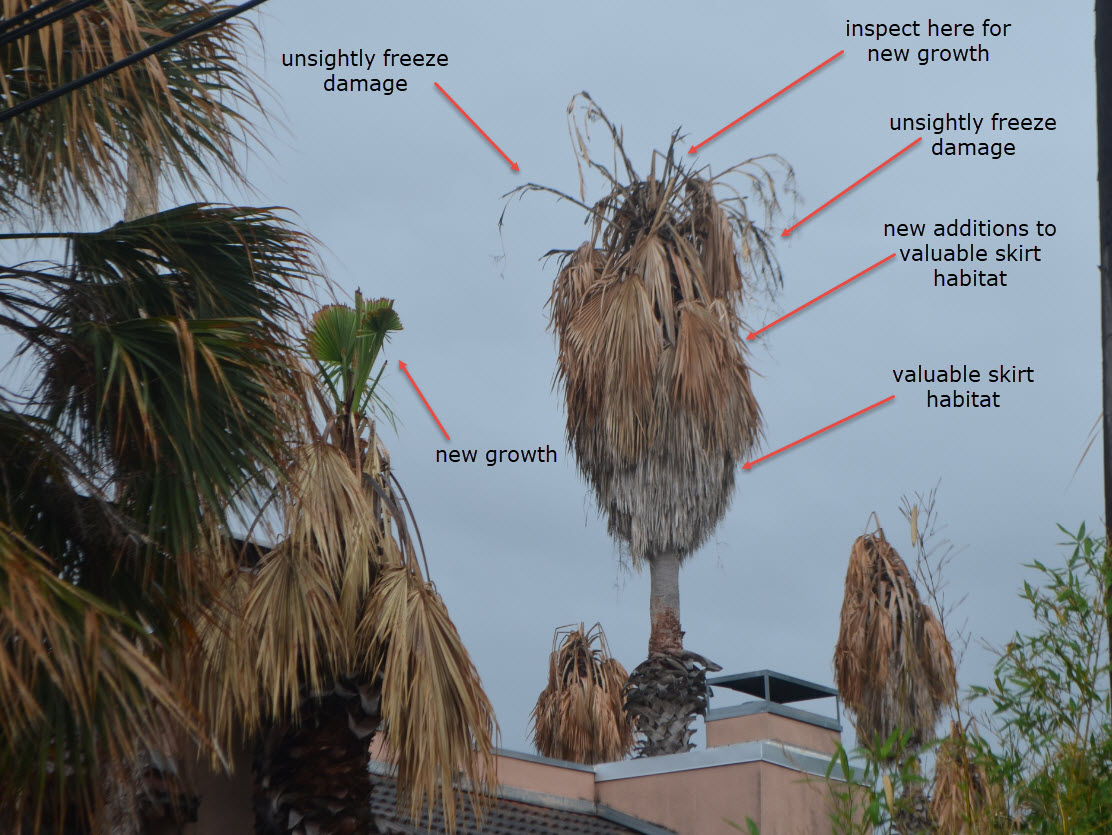
If palms are far enough away from buildings or foot traffic, they would not seem to pose a liability issue for property owners, but of course it is up to the property owner to determine this. We only ask that wildlife be considered and that if at all possible, habitat be preserved.
If palms are dead and need to be removed, then her are some Best Management Practices for removal. We also include BMPs for pruning :
- A bucket lift should always be used for this work. Climbing a palm to “top it” is very risky to the tree worker and to wildlife. A palm tree is basically a big piece of grass and when it dies, the stem can become mushy, creating a hazard for a climber. Using a bucket lift allows for much safer conditions for performing the work and eliminates the need to drop the whole head of the palm tree, crushing wildlife in the fall.
- While working from above, start pruning the topmost fronds and lower each frond with a thin rope. Inspect each frond so that bats hidden in double pleats or cones in the frond are not killed in the wood chipper. This requires a strong light to illuminate the deep recesses of the frond as it sits on some saw horses. Only once sure that bats are not still in the recesses of the frond (see examples below) should the empty frond be fed into a wood chipper.
- Proper arborist clothing and working from above eliminates any accidental contact with a bat. Yellow bats are not aggressive and sleep quite soundly; they may not wake up even with chainsaws cutting their fronds. But when a frond falls, a bat could possibly become dislodged and accidentally land on a tree worker, if he/she is working from below.
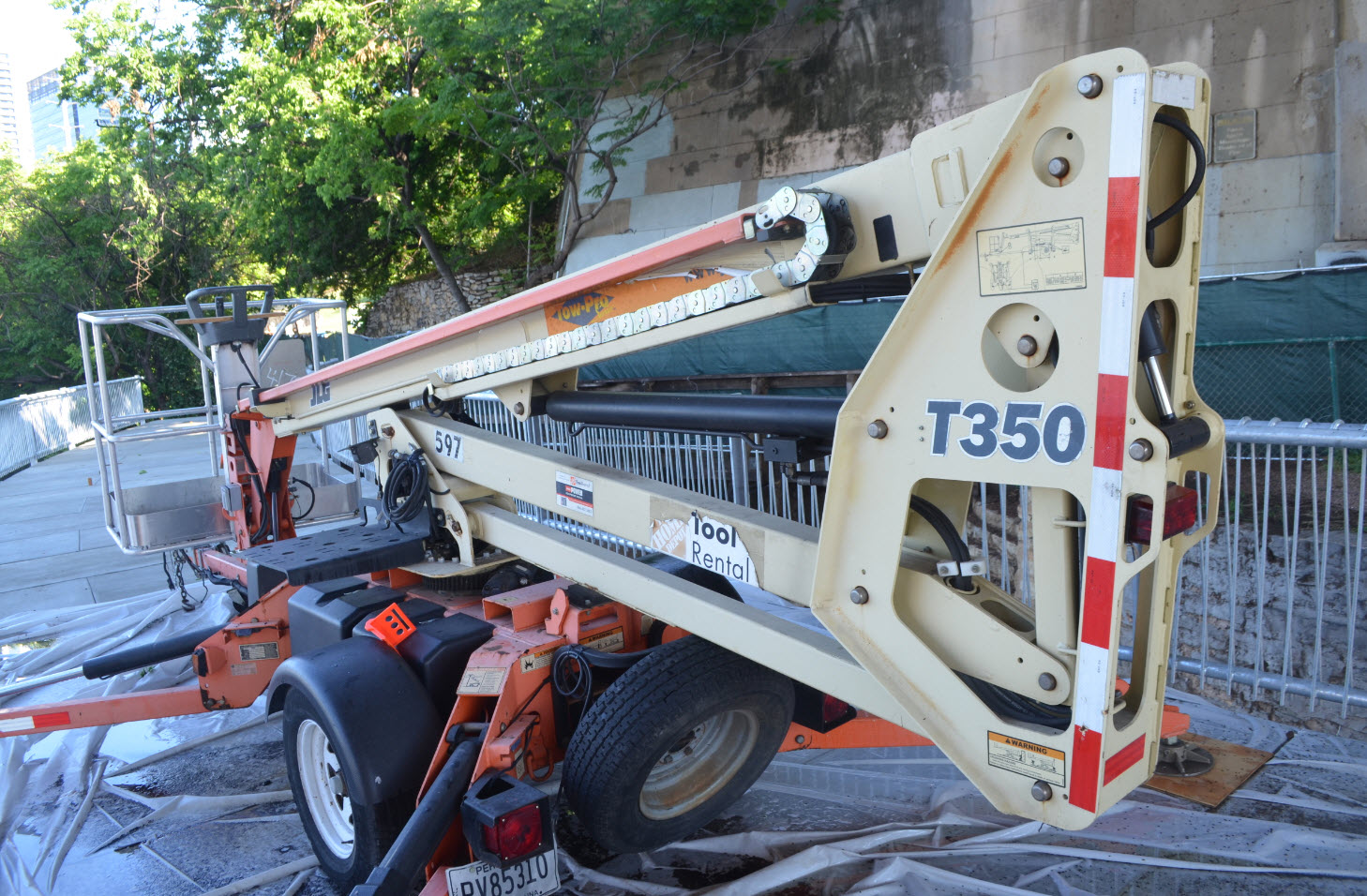
Bats hide in palm fronds for protection against predators. At a minimum, they will be between two fronds, but often they wiggle up into areas not noticeable at first glance. These areas include the shoulders of palm fronds, double pleats, and cones. See the following video for an example of a bat in a cone formation of a sabal palm frond.

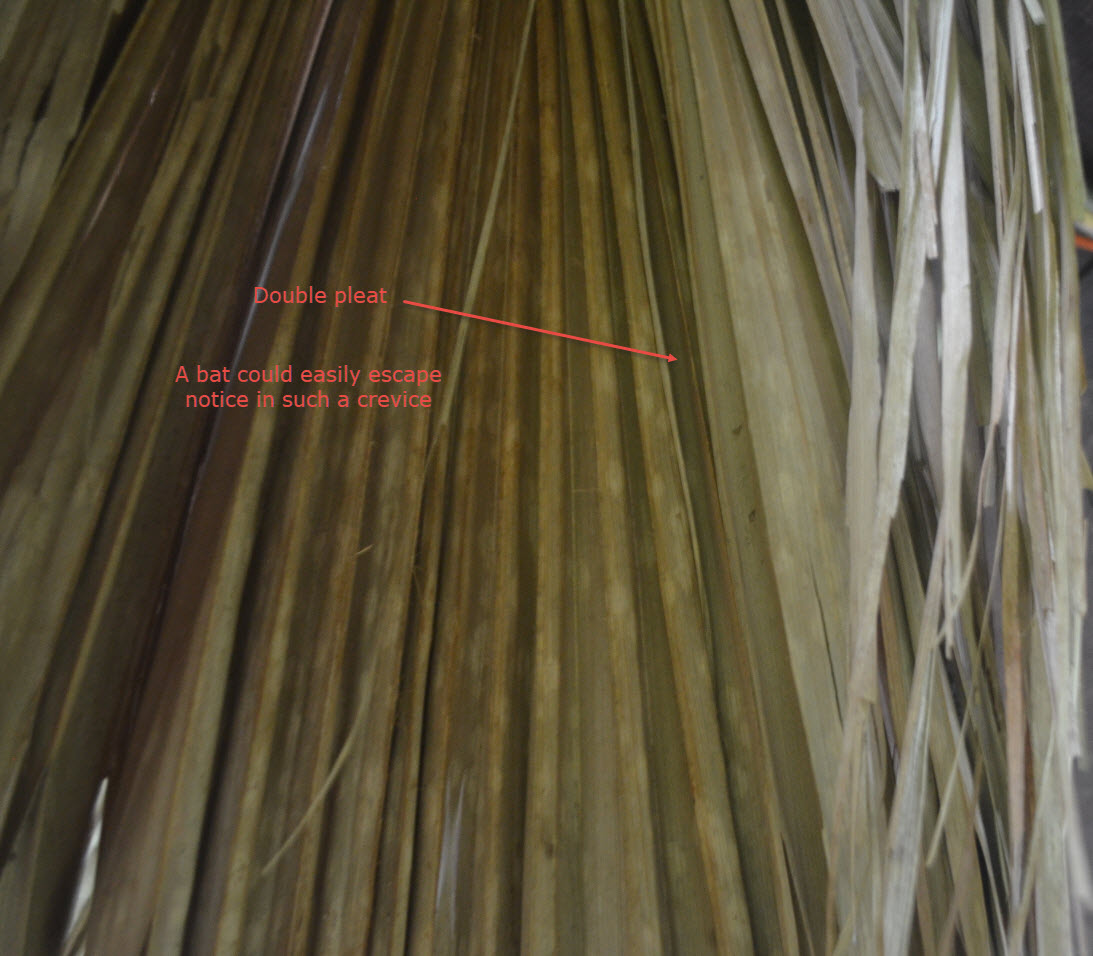
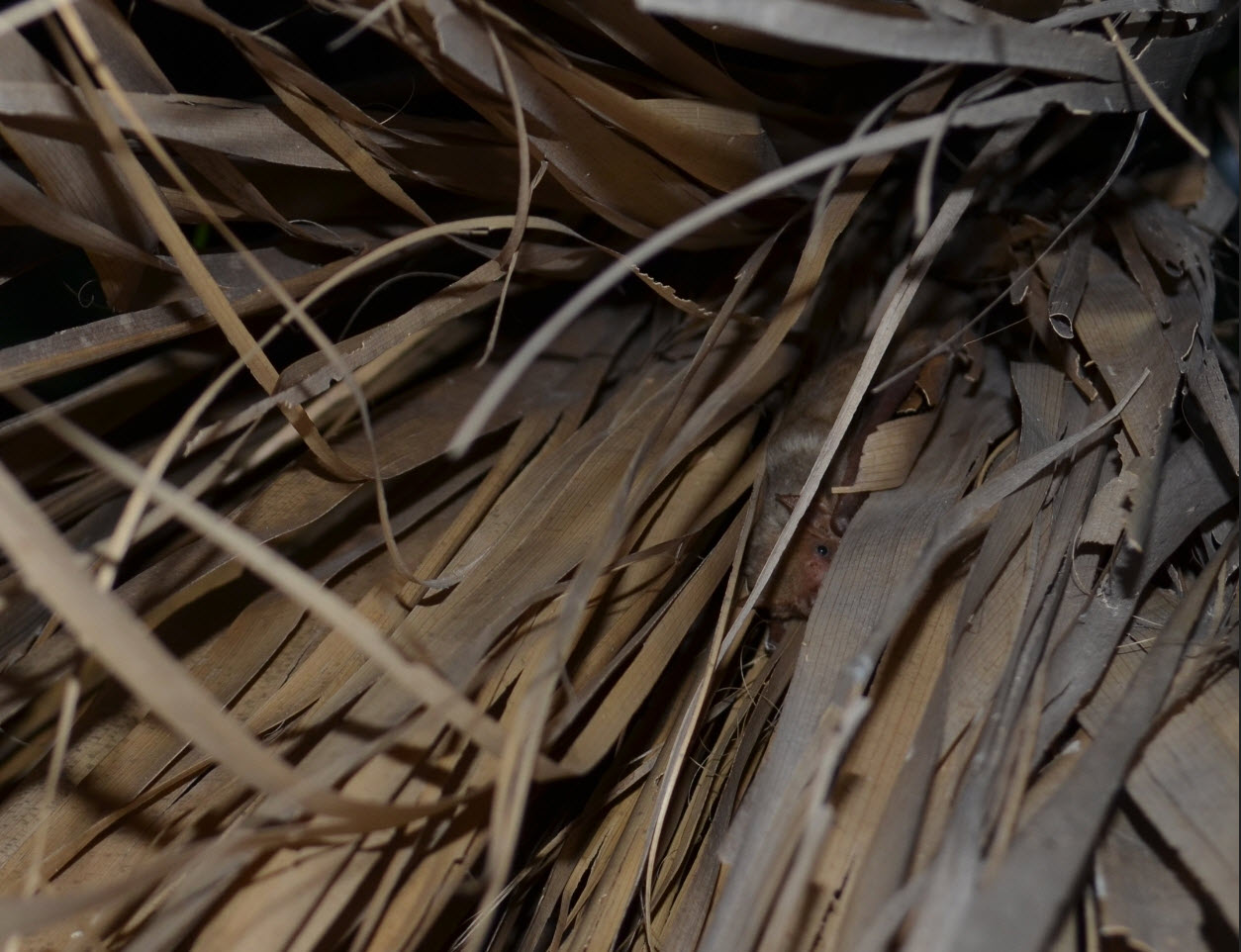

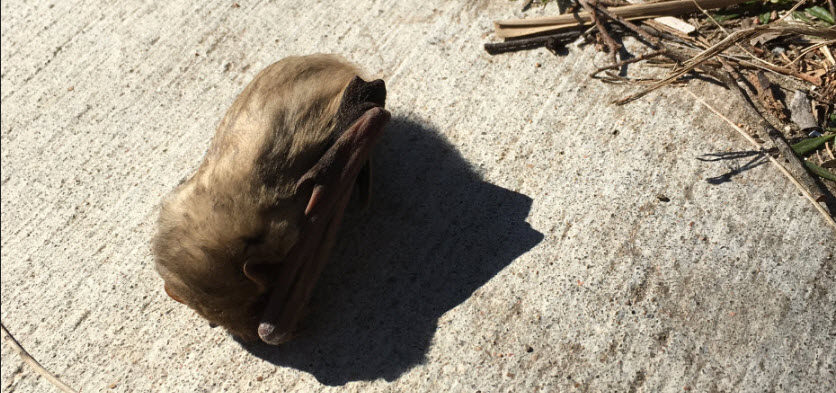

You Can Help
- Make your palm tree a Bat Refuge. We’ll be looking for good release sites!
- Become a yellow bat advocate.
- Help change the aesthetic. Palm trees don’t look right without a skirt. We call that the Strip Club Cut!
- Lobby your Home Owners Association to not require pruning of palm trees.
- Ask your apartment managers to leave the skirt of palm trees on the property for wildlife habitat.
- Keep an eye out for grounded bats if tree work is done around your residence.
- Spread the word to professional organizations such as Property Management Associations, Apartment Manager Associations, Arborist Associations, Real Estate companies, and especially to The Guy With a Pickup Truck.
- Praise the City of Austin Public Works, Watershed Protection, and Parks and Rec for agreeing to care for bats when maintaining palms. Thanks y’all!
My Palm Tree is Bat Habitat
If you’d like to volunteer a palm tree on your property to be a rehoming site for displaced bats, please fill out the form below. Please only fill out this form in you live in Texas, preferably the area around Austin.